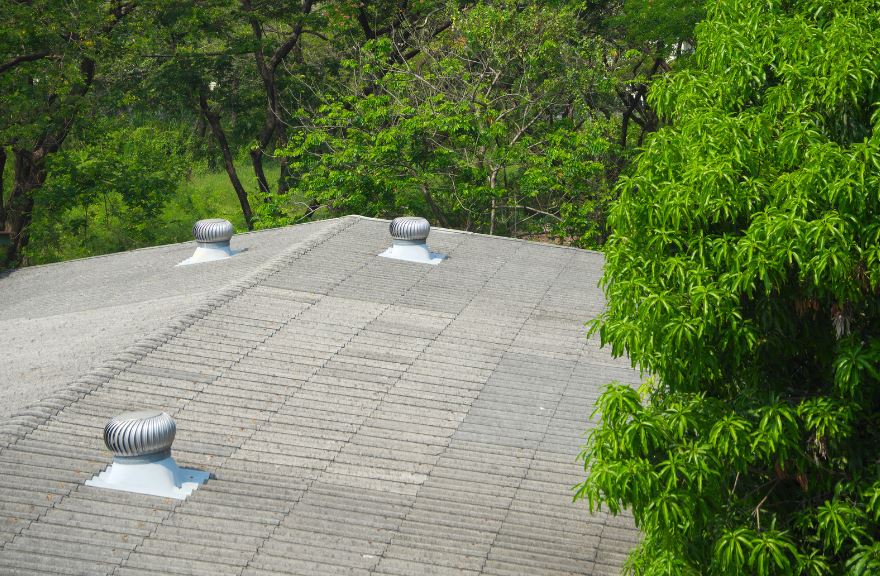Even though the roof is often viewed as one large component, several components make up the full roof system. The roofing itself is no doubt important, but the right type of roof ventilation is also critical. If your roof does not have the proper ventilation in place, this affects the performance and life span of the entire roof system. This is why when you work with a professional roofing company like Davidoff Roofing, a lot of attention is given to rooftop ventilation. Take a closer look at the essential things to know about roof ventilation.
What is the purpose of roof ventilation?
Ultimately, the lack of ventilation can lead to the failure of the materials and the need for frequent repairs. When vents are placed on the roof, the added airflow keeps the attic of the house dry and cool. In the summer, this helps keep the attic from overheating, which can also lead to higher temperatures of the roofing materials. In the colder months, this prevents warm air from getting trapped inside the attic. A warmer attic makes snow on the roof melt, which then refreezes and creates ice dams which are especially damaging to roofs.
How does roof ventilation work?
Roofing ventilation allows continuous air to flow through the attic. The vents pull air and moisture out of the space within the attic and expels it outdoors from the roof. The vents have to be placed in precise areas to collect the warm, moist air and push the collected air out away from the roof itself. For the system to be effective, the vents must balance air intake and exhaust. This slightly pressurizes the attic space, which prevents conditioned air (from heating and cooling systems) from escaping too rapidly.
What are the benefits of roof ventilation?
The primary benefits that come along with good roof ventilation include:
- Roofing materials stay at a consistent temperature
- Ice dams are not an issue in the winter months
- The home’s attic stays at a more consistent temperature
- Moisture and humidity do not collect in the attic or under the roof
- Roofing materials are less likely to break down faster than they should
- The home can be heated and cooled more efficiently
What are the components of roof ventilation?
The two critical components of roof ventilation are intake and exhaust. Intake is where the air gets into the attic, which is most often around the soffits. Exhaust ventilation, by contrast, is where the intake air is pulled out of the attic. Exhaust ventilation is usually located near the peaks of the roof. When set up correctly, ventilation does not need a power source; the flow of air naturally goes through the intake and out of the exhaust. However, some homes have mechanical roof ventilation systems to better control and encourage airflow.
How do you determine if your roof is poorly ventilated?
When a home has the proper roof ventilation, you can feel the difference when you enter the attic. You will usually feel a slight draft of air moving through the attic as air travels in and then out. The attic should not feel overly stuffy or damp either, as this is a sure sign that air is not flowing through the attic as it should.
Need help with roofing ventilation?
In the end, choosing the right roof ventilation makes a major difference in how well your roof works for your home. Want to know more about creating the most efficient rooftop system in London, Ontario, and surrounding areas? Reach out to Davidoff Roofing to learn more about our residential roofing services.
